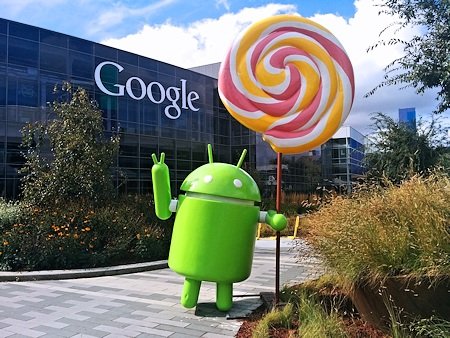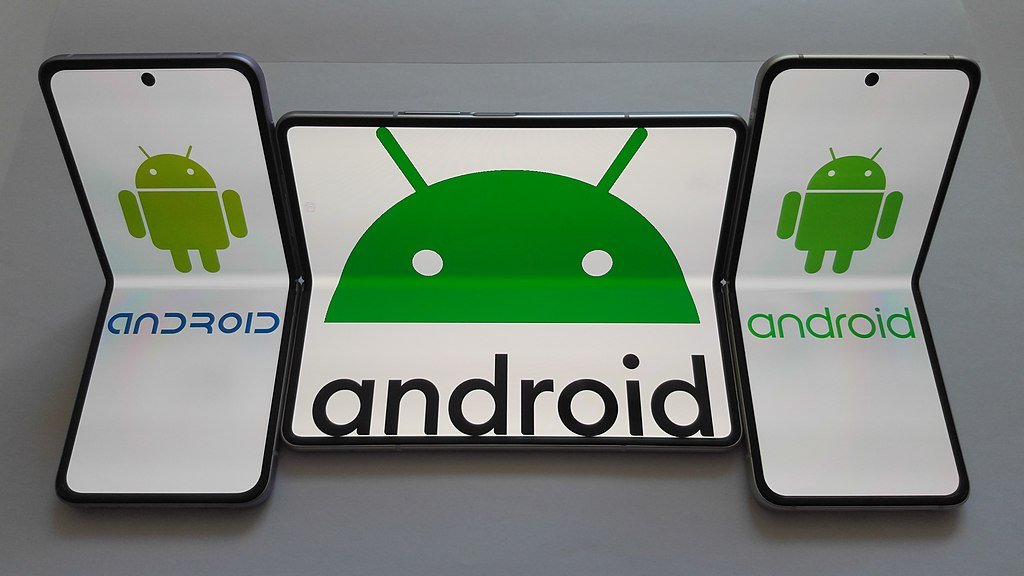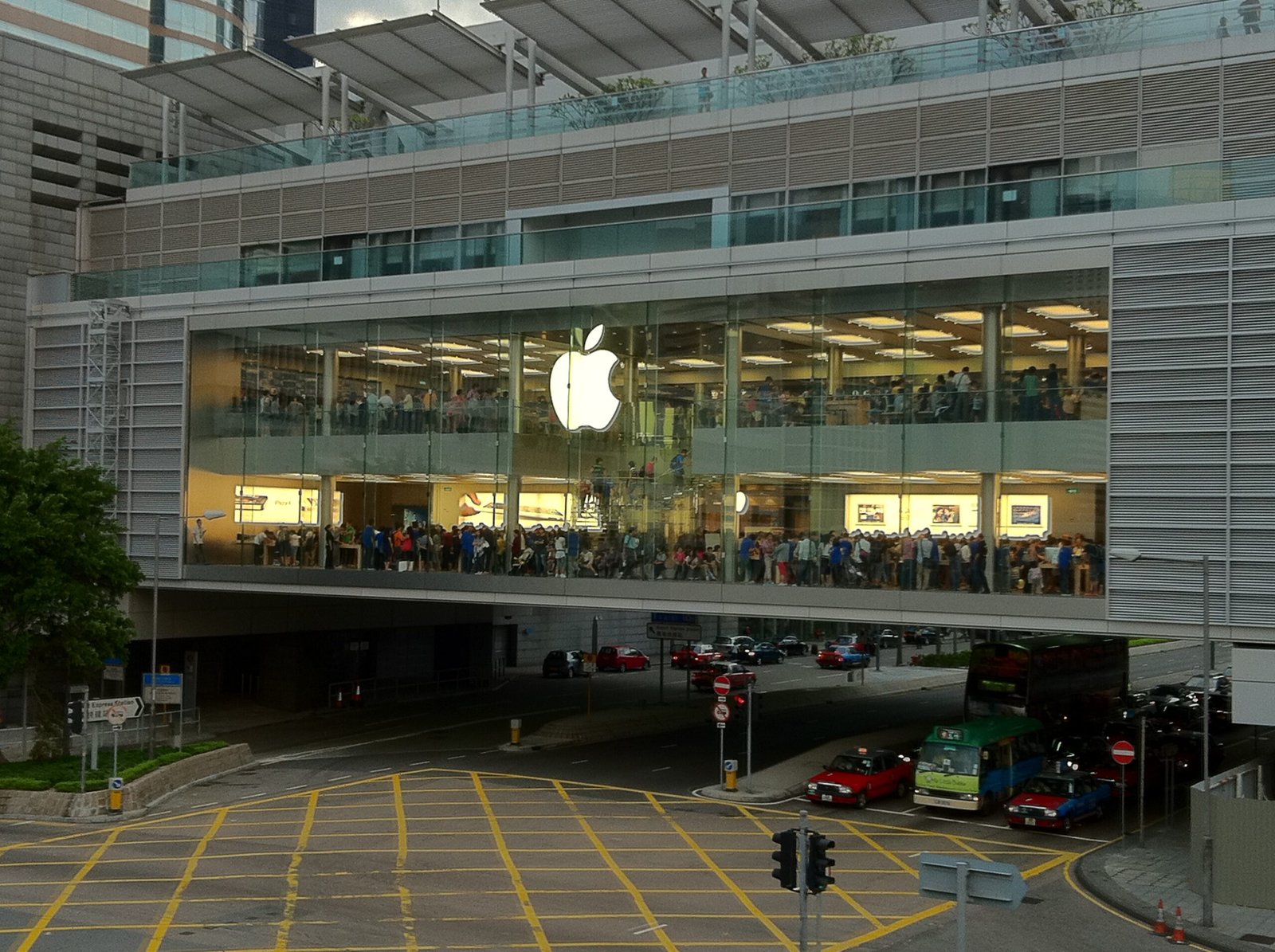In mobile technology, Android stands as an enduring force that has reshaped the landscape of personal computing. From its humble beginnings as a project founded by Andy Rubin, Rich Miner, Nick Sears, and Chris White in 2003, Android has evolved into a ubiquitous and influential operating system, powering a staggering array of devices. This journey is not merely a tale of software development; it encapsulates a narrative of innovation, collaboration, and the relentless pursuit of user-centric experiences.
In 2007, the formation of the Open Handset Alliance marked a pivotal moment as major industry players united under the common goal of advancing open standards for mobile devices. Google’s acquisition of Android Inc. in the same year injected significant resources, catapulting the project onto the global stage. The inaugural Android device, the HTC Dream, launched in 2008, heralding the commencement of a transformative era in mobile computing.
As the Android OS matured, a series of releases unfolded, each introducing novel features and refining the user experience. From Cupcake to KitKat, Lollipop to the latest iterations like Android 12, the platform’s evolution reflects a commitment to innovation and adaptability. Material Design, introduced in 2014, brought a visually cohesive and intuitive interface, while initiatives like Project Treble in 2017 aimed to streamline the often cumbersome update process.
Beyond smartphones, Android extended its influence to diverse form factors, including tablets, smartwatches, and even foldable devices. The introduction of Android Go in 2018 addressed the need for a lightweight version suitable for entry-level hardware, expanding the OS’s reach to a broader audience.
This journey through the annals of Android’s history is not merely a retrospective; it serves as a testament to the platform’s resilience and its ability to anticipate and adapt to the ever-evolving demands of the digital age. Join us on a deep dive into the multifaceted narrative of Android, where innovation and user experience converge to define the past, present, and, undoubtedly, the future of mobile computing.
Table of Contents
Who created Android?
Android was created by a team of developers led by Andy Rubin, Rich Miner, Nick Sears, and Chris White. The journey began in October 2003 when Rubin and his colleagues founded Android Inc. with the initial objective of developing an advanced operating system for digital cameras. However, recognizing the potential in the burgeoning mobile device market, the team shifted its focus to creating a mobile platform.

In 2005, Google, recognizing the strategic importance of mobile technology, acquired Android Inc., providing the project with substantial resources and support. This acquisition marked a crucial turning point, shaping Android into the open-source operating system that it is today.
The collaboration between Rubin, Miner, Sears, White, and the subsequent integration of their efforts into Google’s ecosystem laid the foundation for the development of Android. The platform’s evolution has been guided by a commitment to openness, innovation, and collaboration within the Open Handset Alliance, a consortium of industry leaders working towards advancing open standards for mobile devices. As a result, Android has become a global phenomenon, powering a diverse range of devices and influencing the trajectory of mobile technology over the past two decades.
Which came first iOS or Android?
iOS, developed by Apple Inc., was introduced to the world before Android. Apple released the first iPhone on June 29, 2007, marking the debut of the iOS operating system. Steve Jobs, then-CEO of Apple, unveiled the revolutionary device that combined a phone, an iPod, and an internet communicator. iOS was the proprietary operating system designed exclusively for Apple’s mobile devices, offering a unique and tightly controlled user experience.
In contrast, Android, founded by Andy Rubin, Rich Miner, Nick Sears, and Chris White, was initially envisioned as an operating system for digital cameras. However, in 2005, Google acquired Android Inc., and the project shifted its focus to mobile devices. The Open Handset Alliance, a consortium of tech companies, was formed in 2007 to collaborate on the development of Android.
Android made its official debut with the HTC Dream (T-Mobile G1) on September 23, 2008, making it the first commercially available Android device. While iOS pioneered the touchscreen smartphone era in 2007, Android quickly followed suit, introducing a competitive alternative and sparking a dynamic and ongoing rivalry between the two dominant mobile operating systems.
What Is Android 13 Called?
Google’s tradition of whimsical codenames for major Android OS releases began in 2009 with “Cupcake” and continued with delectable treats like “Gingerbread” and “Jellybean.” This playful practice added a touch of charm to each iteration and delighted users worldwide. However, after the release of “Pie” (Android 9) in 2018, Google ceased using these names in public-facing materials, opting instead for numerical designations like Android 10.
Despite the shift in public branding, internally, Google maintains the tradition, with each version assigned a sweet-themed codename. For instance, Android 13 was dubbed “Tiramisu.” This naming convention adds a layer of fun and creativity to the development process, reflecting Google’s innovative ethos.
Looking ahead, the upcoming Android 14, slated for release in August 2023, carries on this tradition with the codename “Upside Down Cake.” While users may not see these names prominently displayed, they remain an endearing aspect of Android’s development journey, serving as a reminder of the platform’s evolution and the spirit of exploration that drives innovation within Google’s walls.
History of Android
The history of Android is a fascinating journey that spans over two decades. Android, an open-source operating system for mobile devices, has become one of the most dominant platforms in the world. Here’s a detailed overview of the history of Android:

Origins (2003-2005)
In October 2003, Android had its inception when Andy Rubin, Rich Miner, Nick Sears, and Chris White founded the project with an initial goal focused on creating an advanced operating system tailored for digital cameras. However, recognizing the potential for a more expansive impact, the team swiftly pivoted its focus towards the development of a versatile mobile device platform.
The pivotal moment for Android came in 2005 when Google, recognizing the burgeoning potential of the project, acquired Android Inc. This strategic move provided Android with not just a new home but also substantial resources and support from one of the tech industry’s giants. With Google’s backing, the Android project gained the necessary impetus to evolve into a groundbreaking mobile operating system.
This acquisition marked the beginning of Android’s journey towards becoming a dominant force in the mobile industry. It laid the foundation for a collaborative effort that would redefine the way people interact with technology. From its initial aspiration for digital cameras to becoming a powerhouse in the mobile space, Android’s trajectory showcases not only the adaptability of its founders but also the transformative impact of strategic partnerships within the ever-evolving landscape of technology.
Open Handset Alliance (2007)
In a landmark announcement on November 5, 2007, the Open Handset Alliance (OHA) emerged, a coalition comprising prominent technology and mobile companies united by a shared vision: the development of open standards for mobile devices. This collaborative effort sought to foster innovation and interoperability within the mobile industry, emphasizing the importance of an open-source approach to propel the evolution of mobile technology.
Concurrently, 2007 marked the revelation of the first Android prototype, a momentous stride in the journey towards a revolutionary mobile operating system. This prototype previewed a touch-based user interface, signaling a departure from conventional button-centric designs and foreshadowing the future of intuitive and interactive mobile experiences.
The convergence of these two events laid the foundation for Android’s trajectory. The OHA’s commitment to open standards set the stage for widespread collaboration and accelerated development, while the touch-based interface showcased in the prototype hinted at the user-centric design philosophy that would become a hallmark of Android’s success. Together, these milestones in 2007 marked the inception of a transformative era in the mobile industry, heralding the rise of Android as a dynamic and influential force in the world of technology.
Android OS Releases
The evolution of Android, the open-source mobile operating system, has been marked by significant milestones, shaping the way we interact with smartphones and other devices. Here’s a chronological overview of key releases:
Android 1.0 (September 2008)
Debuting on the HTC Dream (T-Mobile G1), Android 1.0 marked the platform’s commercial launch.
Android 1.5 Cupcake (April 2009)
Introduced on-screen keyboards, video recording, and support for third-party widgets, enhancing user experience and customization.
Android 2.0/2.1 Éclair (October 2009)
Brought a refined UI, turn-by-turn navigation, and improved keyboard functionality, enhancing both aesthetics and functionality.
Android 2.2 Froyo (May 2010)
Featured Wi-Fi hotspot capabilities, Adobe Flash support, and improved performance, catering to the growing demands of multimedia consumption.
Android 2.3 Gingerbread (December 2010)
Focused on refining UI elements and improving gaming performance, catering to the rising popularity of mobile gaming.
Android 3.0 Honeycomb (February 2011)
Tailored for tablets, Honeycomb introduced a holographic UI and optimizations for larger screens, anticipating the shift toward tablet devices.
Android 4.0 Ice Cream Sandwich (October 2011)
Unified UI for smartphones and tablets, improved multitasking, and the introduction of facial recognition showcased Google’s commitment to a seamless user experience.
Subsequent Releases

Android continued to evolve with releases like Jelly Bean, KitKat, Lollipop, Marshmallow, Nougat, Oreo, Pie, and Android 10, each bringing new features, performance improvements, and security enhancements.
This chronological progression illustrates Android’s dedication to innovation, addressing user needs, and adapting to the ever-changing landscape of mobile technology. From foundational improvements to the introduction of novel features, each release contributed to Android’s prominence in the mobile operating system space.
Material Design (2014)
In a pivotal move in 2014, Google ushered in a new era of visual aesthetics and design cohesion with the introduction of Material Design alongside Android 5.0 Lollipop. This marked a departure from the previous design language, introducing a more consistent, intuitive, and visually appealing framework that transcended various device form factors.
Material Design was characterized by its emphasis on realistic lighting, shadows, and motion, creating a tactile and responsive user experience. The design language aimed to bridge the gap between the physical and digital realms, providing users with a seamless and enjoyable interface across smartphones, tablets, and other devices.
One of the key principles of Material Design was its focus on providing a unified visual language for developers, ensuring a consistent look and feel across applications. This not only elevated the user experience but also facilitated easier navigation and interaction within the Android ecosystem.
The introduction of Material Design not only marked a visual transformation but also symbolized Google’s commitment to elevating the standard of design in the digital space. Its influence extended beyond the Android platform, shaping the visual identity of various Google services and inspiring design trends across the broader tech industry. Material Design, with its sleek aesthetics and intuitive principles, remains a cornerstone in the ongoing evolution of Android’s user interface.
Project Treble (2017)
With the introduction of Android 8.0 Oreo, Google embarked on a transformative initiative known as Project Treble, addressing a longstanding challenge in the Android ecosystem—the fragmentation of updates across devices. Launched in 2017, Project Treble aimed to streamline the update process by disentangling the vendor implementation layer from the core Android operating system.
Traditionally, Android updates faced delays as manufacturers and device vendors had to customize the OS to suit their specific hardware configurations. Project Treble sought to break this dependency by creating a modular architecture. By isolating the vendor implementation, which includes device-specific drivers and low-level software, from the core OS framework, Google empowered manufacturers to deliver updates more efficiently.
This architectural shift allowed for a clearer separation between the vendor-specific code and the Android OS framework, enabling faster deployment of updates. Manufacturers could now work on their customizations independently, reducing the complexities associated with adapting the latest Android version to diverse devices.
Project Treble marked a significant step towards mitigating the fragmentation issue within the Android ecosystem, fostering a more streamlined and timely distribution of updates across a diverse range of devices. This initiative exemplifies Google’s commitment to enhancing the user experience and addressing longstanding challenges within the Android platform.
Android Go (2018)
Android Go, introduced by Google, represents a strategic move towards inclusivity and accessibility within the realm of mobile technology. Unveiled as a lightweight version of the Android operating system, Android Go specifically targets entry-level devices characterized by limited hardware capabilities. The primary objective is to offer a smooth and optimized user experience on devices with lower processing power, memory, and storage.
Launched in 2018, Android Go streamlines the core Android experience, providing essential features while minimizing resource-intensive elements. This includes a suite of optimized Google apps tailored for efficiency, such as Google Go, Gmail Go, and YouTube Go. These applications consume less data and utilize fewer system resources, ensuring a responsive performance even on devices with modest specifications.
The introduction of Android Go aligns with Google’s commitment to bridging the digital divide, aiming to bring the benefits of the Android ecosystem to users across various economic segments. By offering a tailored solution for entry-level devices, Android Go extends the reach of the Android platform to a broader audience, fostering inclusivity in the ever-expanding landscape of mobile technology. This lightweight version stands as a testament to Google’s adaptability and dedication to providing a consistent and enjoyable user experience across a diverse range of devices.
Foldable Devices Support (2019)

With the release of Android 10, Google strategically positioned itself at the forefront of the mobile industry’s evolutionary curve by introducing robust support for foldable devices. This marked a decisive response to the industry-wide trend of exploring innovative form factors and ushered in a new era of mobile device design.
Android 10’s enhanced support for foldable devices was a forward-thinking move that acknowledged the growing interest in flexible and multifunctional displays. The update included optimizations to the Android operating system, providing developers with tools and guidelines to create seamless and intuitive experiences for users across various foldable form factors.
These enhancements went beyond mere adaptability to different screen sizes; they aimed to leverage the unique capabilities of foldable devices, offering a more immersive and versatile user experience. Developers were empowered to design applications that seamlessly transitioned between different modes, capitalizing on the flexibility of foldable screens.
Google’s proactive approach with Android 10 not only aligned with the burgeoning demand for foldable devices but also demonstrated the company’s commitment to staying ahead of technological trends. By fostering an ecosystem that embraced innovative form factors, Google contributed significantly to the evolution of mobile devices and reinforced Android’s position as a trailblazer in the ever-changing landscape of mobile technology.
Android 11 and Beyond
Android 11, introduced in 2020, marked a significant milestone in the evolution of the Android operating system. Emphasizing user privacy, this release featured a robust set of privacy features aimed at giving users more control over their personal data. One notable addition was the introduction of one-time permissions, allowing users to grant temporary access to sensitive information like location or camera, enhancing overall data security.
Improvements in messaging were another key focus. Android 11 facilitated more seamless conversations by consolidating messaging notifications, ensuring a more organized and user-friendly experience. The introduction of Bubbles, a feature that allowed specific conversations to float on the screen, offered enhanced multitasking capabilities and quick access to ongoing chats.
Enhanced control over device permissions was a crucial aspect of Android 11 and subsequent versions. Users gained more granular control, allowing them to grant permissions on a one-time basis or only while using specific apps. This approach empowered users to tailor their device’s security settings to align with their preferences, striking a balance between functionality and privacy.
These privacy-centric enhancements in Android 11 laid the foundation for subsequent iterations, reaffirming Google’s commitment to providing users with a secure and customizable mobile experience. As Android continued to evolve, these features remained integral, reflecting the ever-growing importance of user privacy and control in the digital age.
Android 12 (2021)
Android 12 marked a paradigm shift in the visual aesthetics of the operating system with the introduction of “Material You.” Unveiled in 2021, Material You represents a departure from the uniformity of design, offering users a highly personalized and expressive interface. The key emphasis of this update lies in empowering users to tailor their devices to reflect their unique preferences and styles.
Material You introduces dynamic theming, allowing users to extract dominant colors from their chosen wallpapers. These colors are then intelligently applied across the system, influencing the appearance of UI elements, notifications, and various interface components. This dynamic approach not only enhances visual cohesion but also provides a sense of continuity between different aspects of the user experience.
Beyond mere color customization, Android 12 introduced fluid motion, responsive animations, and redesigned widgets, contributing to a more immersive and intuitive user interface. The update represents a deliberate effort by Google to prioritize individuality, acknowledging that users seek a more personal connection with their devices.
Current State (2024)
Android has solidified its position as the preeminent mobile operating system, boasting global dominance and widespread adoption across an expansive array of devices. As of now, it stands as the most widely used OS worldwide, underpinning a diverse ecosystem that extends far beyond traditional smartphones.
The versatility of Android is evident in its integration across various form factors, ranging from ubiquitous smartphones and tablets to the burgeoning market of smartwatches and smart TVs. Its open-source nature has allowed manufacturers to adapt and implement it across a broad spectrum of devices, catering to the diverse needs and preferences of consumers globally.
The proliferation of Android has created a seamless, interconnected experience, allowing users to transition effortlessly between different devices while maintaining a consistent interface. This adaptability and ubiquity contribute to its popularity, fostering an ecosystem that extends beyond personal devices to include applications in embedded systems, automotive technology, and other emerging domains.
Android’s journey has been instrumental in shaping the mobile industry, leaving an indelible mark on innovation and connectivity. From its inception, Android’s open-source nature has fueled creativity, allowing it to evolve into a versatile platform that extends well beyond conventional boundaries. It serves as a fertile ground for developers, enabling them to craft diverse and innovative applications, while simultaneously offering users a rich and customizable experience.
The platform’s adaptability has spurred a wave of technological advancements, influencing everything from user interfaces to the very architecture of smartphones. Android’s democratizing influence has empowered a global community of developers and users, fostering a dynamic ecosystem where ideas flourish. As a result, Android remains not just a mobile operating system but a catalyst for progress, continually shaping and propelling the mobile industry into new frontiers of connectivity and user experience.











